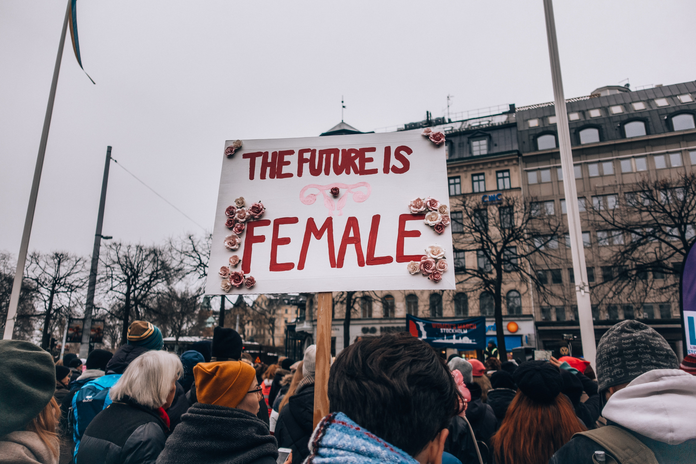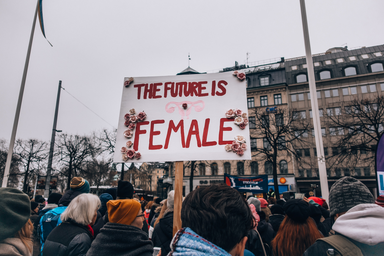The rights women enjoy today is a result of decades of hard-work. The fight for equality, economic inclusion and access to education and health is still an on-going battle. Let us take a moment to appreciate the work of our ancestors and everyone who fearlessly fought for the rights women enjoy today.
Elizabeth Cady Stanton (USA)
Stanton, along with Lucretia Mott and a few other reformers, organised the first women’s rights convention in Seneca Falls (1848). 100 of the delegates (68-women and 32-men) signed a Declaration of Sentiments, modelled on the Declaration of Independence, declaring that women were equal to men. The Seneca Falls Convention was the beginning of the campaign for women’s suffrage.
Millicent Fawcett (UK)
Fawcett campaigned for women’s rights and dedicated her work towards the women’s right to vote. Through her leadership of the National Union of Women’s Suffrage Societies(1897 onwards) she provided an influential force in the campaign for women’s right to vote. In 1918, after years of handwork in which Fawcett played a significant role, women in the UK secured the right to vote. She was the first woman to have a statue erected in London’s Parliament Square.
Emmeline Pankhurst (UK)
Pankhurst dedicated her life to fight for women’s right to vote. She founded the Women’s Social and Political union. The group had a reputation for employing military tactics including hunger strikes, arson and window smashing. She was arrested on several occasions over the years and went on hunger strikes which was the reason behind the “Cat and Mouse Act” which allowed hunger striking prisoners to be released and rearrested when they were well again.
Kate Sheppard (New Zealand)
New Zealand was the first country in the world to grant women the right to vote in 1893. Sheppard was a leading activist in securing the right for women to vote. She was the president of the National Council of Women of New Zealand and the editor of ‘The White Ribbon’, the first newspaper in New Zealand to be owned, managed and published solely by a woman.
Frances Harper (USA)
Through her poetry, she became a leading voice for dealing with issues of slavery and abolition. She was one of the first African-American women to publish a novel in the United States, Lola Leroy (1892). Towards the end of the 19th century, Harper was one of the only few African-American women included in the women’s rights movement. She co-founded the National Association of Coloured Women Clubs.
Sojurner Truth (USA)
Truth was an African-American abolitionist who was born into slavery but escaped to freedom with her daughter at the age of 29. In 1828 she became the first African-America women to win a custody battle against her white husband to get custody of her son from slavery. She did not stop after slavery was abolished. She continued to fight for people of colour and women. She tried to secure land grants for former slaves after abolition.
Susan B. Anthony (USA)
She was a lifelong activist for gender and racial equality and a leader of the women’s suffrage movement. In 1872, Anthony was arrested for attempting to vote. This led to protests and brought to attention the suffrage movement. Anthony died 14 years before the 19th Amendment came into effect in 1920, giving women the right to vote.
Frida Kahlo (Mexico)
Kahlo was an artist born in Mexico who showed her strong support for the Mexican Revolution through her artwork. She portrayed taboo topics such as abortion, breastfeeding and childbirth in her art. Kahlo was an openly bisexual woman and gave no excuse nor apologies for her sexual preferences.
Rose Schneiderman (USA)
Schneiderman was a labour organiser focusing on the needs of working women post-suffrage. During the Great Depression, Schneiderman advocated for unemployed female workers to get relief funds. She also fought to improve wages and working conditions for waitresses, laundry workers, beauty parlour workers and hotels maids. Schneiderman was president of the Women’s Trade Union League and was the only woman who served on the National Recovery Administration’s Labour Advisory Board.
Margaret Sanger (USA)
Sanger founded the American Birth Control League in 1921. She advocated to decriminalise the use of contraception and introduce laws to bering birth control information and contraceptive devices to women.
Having read about these ten, out of thousands of incredible women who helped shape the world we live in today, How many names had you previously heard?
That is where we need to begin. In schools across the world, children are taught of important figures, male figures without much attention to women’s rights or women’s history. By leaving these incredible women out of the school curriculum we are portraying these figures in an insignificant light. It creates an incomplete understanding of the world we live in today. We do not want a world where children ask their grandmothers, or worse, think less of them for being ‘just’ housewives are choosing a ‘female profession’. Children need to know that it was not until 1869 that women could be accepted to university in the UK. It was not until 1882 that women in the UK had a separate identity from their husbands and were able to own and control property as their own. Why are most famous scientists and inventors men? It is largely attributed to the social status of women in the past and their inability to access education and work outside their home.
This is where we begin. Let us read, learn and educate our future generations.


